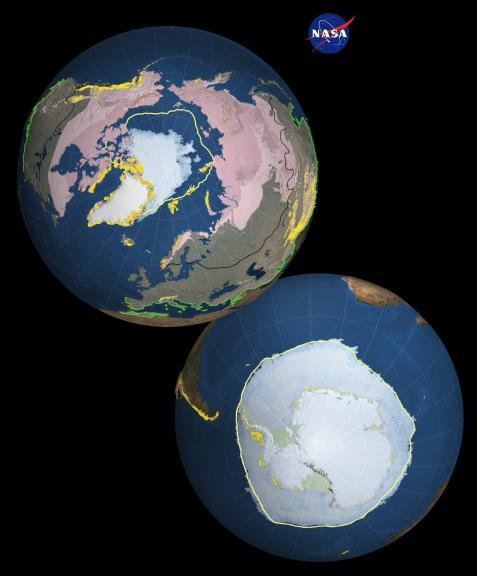
Lead supervisor: Ali Mashayek, Earth Sciences
Co-supervisor: Alexander Piotrowski, Earth Sciences
Brief summary:
The climate change-induced destabilization of polar regions has global impacts, by altering the circulations of the ocean and atmosphere, sea-level rise, and the worldwide heat and carbon budgets. This project uses observations and modelling to investigate disruptions to ocean circulation due to the rapid changes in the polar climates.
Importance of the area of research concerned:
The polar regions are undergoing dramatic changes because of global warming, with temperatures increasing at more than twice the rate of the rest of the planet. Polar changes have global impacts by altering the circulations of the ocean and atmosphere, sea-level rise, and the worldwide heat and carbon budgets. The timescales of such effects range from annual (e.g., weather) to millennial (e.g., >10 m sea level). Understanding the full range of possible future polar climate states and their global impact requires an appreciation of dynamic and connected processes in the ocean, atmosphere and cryosphere. There are extensive records of polar-induced climate states and changes during the Earth’s history (e.g. glacial-interglacial cycles), but the decoding of this record needs to link palaeoproxy records with a mechanistic understanding of the Earth System through time.
Project summary :
Deep and intermediate ocean waters are formed by the exchange of heat and freshwater with the atmosphere and cryosphere, altering the temperature and salinity (therefore density) of the surface ocean. The aim is to discover how ‘tipping’ behaviour, where modest forcing can lead to large changes in the ocean circulation, can emerge. The project involves:
I) implementation of recent advancements in the theory of ocean circulation in a model
II) verification of the model result against available climate proxy data to verify the first stage and advance fundamental understanding,
III) application of the verified and understood model to future climate predictions
What will the student do?:
The student will
- employ the MIT general circulation model to produce a simulation of the present-day ocean circulation (with a carbon cycle) and verify the results against observations via ocean state estimates (ECCO; https://ecco-group.org/)
- implement a recently developed parameterization (e.g. https://doi.org/10.1017/flo.2022.16) for ocean turbulence in the model and evaluate the improvement in the simulation output
- configure the model to produce a glacial ocean and simulate glacial-interglacial transitions and other millennial-scale climate shifts
- connect the model output with paleoclimate proxy data to improve understanding of past circulations and evaluate the influence of the implemented turbulence parameterization on the climate system (e.g. global carbon budget)
- run the model forward from the present day for a select number of IPCC emission scenarios to improve predictions of change to ocean circulation over the coming decades to a few centuries. The goal will be to identify the mechanisms in the history of the oceans that led to tipping points that can potentially lead to other tipping points in the near future
References - references should provide further reading about the project:
Larkin, C.S., Ezat, M.M., Roberts, N.L., Bauch, H.A., Spielhagen, R.F., Noormets, R., Polyak, L., Moreton, S.G., Rasmussen, T.L., Sarnthein, M. and Tipper, E.T., 2022, Nature Geoscience, 15(11), pp.925-931, https://doi.org/10.1038/s41561-022-01050-w
Siegert, M., Bacon, S., Barnes, D., Brooks, I., Burgess, H., Cottier, F., Depledge, D., Dodds, K., Edwards, M., Essery, R. and Heywood, K., 2020, The Arctic and the UK: climate, research and engagement, https://doi.org/10.1038/s41558-019-0662-y
Goosse, H., Kay, J.E., Armour, K.C., Bodas-Salcedo, A., Chepfer, H., Docquier, D., Jonko, A., Kushner, P.J., Lecomte, O., Massonnet, F. and Park, H.S., 2018, Nature communications, 9(1), p.1919, https://doi.org/10.1038/s41467-018-04173-0
Applying
You can find out about applying for this project on the Department of Earth Sciences page.